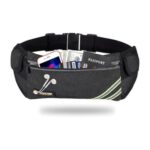Table of Contents
1. Benefits of using a running treadmill
Using a running treadmill offers a myriad of benefits that go beyond traditional outdoor running. One key advantage is the convenience it provides, allowing you to work out regardless of weather conditions or time constraints. Treadmill running also enables you to closely monitor and control your workout intensity, speed, and incline settings, which can be especially beneficial for beginners looking to gradually build their endurance and improve their cardiovascular fitness.
Additionally, treadmills offer a cushioned surface that reduces the impact on your joints compared to running on hard pavement. This feature makes treadmill running ideal for those recovering from injuries or individuals with joint issues seeking a low-impact workout option. Furthermore, modern treadmills come equipped with various tech features such as programmed workouts, virtual training sessions, and heart rate monitoring tools that can enhance your fitness experience and keep you motivated to achieve your goals.
2. Setting up the treadmill properly
Setting up the treadmill properly is crucial for a safe and effective workout experience. First, ensure that the machine is placed on a stable and leveled surface to avoid any accidents during your run. Adjust the speed and incline settings according to your fitness level and goals; starting slow can prevent strain or injury. Additionally, check that the safety clip or key is securely attached to your clothing so that the treadmill stops immediately if you fall.
Ensuring proper posture while running on a treadmill can make a significant difference in your workout effectiveness. Stand tall with relaxed shoulders, engaging your core muscles for stability. Avoid leaning forward onto the handles as this can reduce the intensity of your workout and strain your back over time. Lastly, focus on landing midfoot rather than heel striking to minimize impact on joints and promote a more efficient stride.
By taking these steps to set up your treadmill correctly, you’ll not only enhance the safety of your workouts but also maximize their effectiveness. Remember, an optimally set-up treadmill can help you reach new milestones in your running journey while keeping injuries at bay.
3. Warm-up and cool-down exercises
Before jumping on the treadmill, it is essential to dedicate time to warm-up and cool-down exercises. Warm-up exercises help prepare your body for the upcoming workout by increasing blood flow to your muscles and improving flexibility. Dynamic movements like leg swings, arm circles, and light jogging can activate key muscle groups and prevent injury during your run.
Similarly, cooling down after a treadmill session is just as important. Taking the time to perform static stretches will help reduce muscle soreness and promote recovery. A cool-down routine can include stretches focusing on the hamstrings, quadriceps, calves, and hip flexors. By incorporating these simple yet effective exercises into your treadmill routine, you can enhance performance, prevent injuries, and optimize your overall fitness journey.
4. Proper running form and technique
Proper running form and technique are essential components for a safe and effective treadmill workout. Focus on maintaining an upright posture, with your head up, shoulders back, and core engaged to prevent unnecessary strain on your body. Make sure your strides are not too long or too short; aim for a comfortable length that allows you to maintain a consistent pace without overexerting yourself.
When running on a treadmill, pay attention to your foot strike. Landing mid-foot is generally recommended as it helps absorb the impact of each step and reduces the risk of injury. Additionally, try to keep your arms relaxed at your sides or gently bent at 90 degrees, allowing them to comfortably swing in rhythm with your stride. By mastering proper form and technique on the treadmill, you can optimize your performance and minimize the chances of discomfort or injury during your runs.
5. Safety tips while using the treadmill
One of the key safety tips to keep in mind while using a treadmill is to always start at a manageable pace. Many beginners make the mistake of setting the speed too high, which can lead to accidents or injuries. It’s important to gradually build up your speed and incline as you become more comfortable with using the treadmill.
Another crucial safety tip is to use the safety clip or tether that is often attached to treadmills. This clip should be securely fastened to your clothing so that if you accidentally fall or lose balance, it will stop the treadmill immediately. This extra precaution can prevent serious accidents and give you peace of mind while working out.
Pay attention to your form and posture while using the treadmill. It’s common for runners and walkers alike to hunch over or lean too far forward, which can strain your back and joints over time. Focus on maintaining an upright posture with relaxed shoulders and engage your core muscles for stability throughout your workout session.
Incorporating these safety tips into your treadmill routine will not only help prevent injuries but also enhance your overall running experience by creating a safe and effective workout environment. Remember that safety always comes first when it comes to any form of physical activity, so make sure to prioritize it every time you step onto the treadmill.
6. Monitoring progress and setting goals
Monitoring your progress on a running treadmill not only keeps you accountable but also motivates you to push yourself further. Setting specific, realistic goals can help you track your improvements over time and celebrate your achievements. Use metrics like distance covered, speed, and calories burned to measure your progress accurately.
Remember that progress is not always linear; some days you may feel more tired or struggle with motivation. It’s essential to listen to your body and adjust your goals accordingly. By setting attainable short-term goals leading up to larger milestones, you can ensure steady progress without feeling overwhelmed. Stay consistent with monitoring your performance and adjusting goals as needed to maintain a balance between challenge and safety in your running routine on the treadmill.
7. Conclusion: Enjoy safe and effective treadmill workouts
In conclusion, incorporating treadmill workouts into your fitness routine can be a game-changer when done safely and effectively. Remember that consistency is key, and gradual progression is crucial to prevent injuries and promote long-term success. By sticking to a balanced workout plan that includes warm-ups, cool-downs, proper form, and listening to your body’s signals, you can maximize the benefits of treadmill running.
With the right mindset and approach, treadmill workouts can offer a safe and convenient way to improve your cardiovascular health, build endurance, and boost overall fitness levels. Keep challenging yourself with varied workouts to prevent boredom and plateauing. Embrace the journey of self-improvement through each session on the treadmill, celebrating both small victories and setbacks as part of the learning process. So lace up those sneakers, hit that start button with confidence, and enjoy the exhilarating world of safe and effective treadmill workouts!















